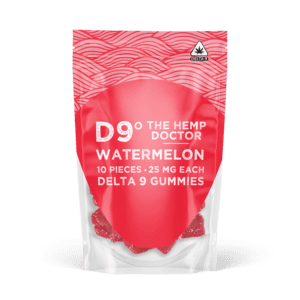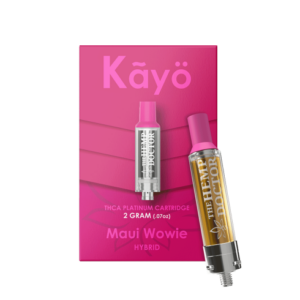The cannabis industry in California is a burgeoning market expected to flourish well into 2030. Entering this type of business legally would require a license. In this article, we discuss various types of California distribution licenses, how to get one, and the costs associated with the process.
🔑 Key Takeaways
- DCC is the regulating body for the state application of cannabis business licensing and maintains an online application portal for all manner of cannabis commercial activities.
- Cannabis distributors, dispensaries, and growers in California go through two main stages of licensing: accomplishing local permits and applying for a state cannabis license.
- The CDPH regulates commercially-available CBD products based on industrial hemp.
Step-By-Step Guide on How to Get a Cannabis Distribution License in California
Before we dish out the steps on how to get a cannabis distribution license in the state of California, let’s define cannabis distribution first.
| 📦 Cannabis Distribution This refers to the procurement, selling, and transportation of cannabis and its products between licensees. Two types of distributor licenses exist in the state of California: Type 11 licensees are responsible for product quality regulation, storage service, and compliance testing processes. They may also move cannabis products between cultivators, manufacturers, distributors, and licensed retailers. Type 13 licensees are authorized only to move cannabis products between growers, manufacturers, and distribution centers. |
Get that distribution license ASAP by following the steps below:
Step 1: Finalize Your Cannabis Business Plan
Create the final list of your company’s short-term and long-term goals. This will dictate the next legal steps to undertake, such as trademarking, creating a master standard procedure, partnering with third-party testing entities, and more.
You may need to partner with a cannabis business lawyer to make sure you’re not missing any legal steps when it comes to the initial planning stage of your distributing business.
Step 2: Select the Business Location
Next, finalize the location of your business. It’s important to be aware that establishing a cannabis business location isn’t as simple as renting out a place of business. California has land use ordinances that prevent cannabis businesses from operating in certain zones.
Fortunately, distribution cannabis centers don’t really require a commercially thriving location. A location accessible to retailers, manufacturers, and other business partners will suffice and effectively widen your options for locations.
Some cities and counties may only call for land use or conditional use permits. Others might require cannabis-specific license applications and documents for review. Additionally, the local jurisdiction of your choice might require fulfilling extra criteria for your commercial cannabis activity.
Step 3: Apply a State Cannabis Distribution License
After taking care of the local side of things, it’s high time you go through the process of applying for a license with the Department of Cannabis Control (DCC). This California State Agency provides the application documents, which include:
- Owner submittal
- Financial forms
- Diagrams of the premises
- Commercial licensee bond
- Transportation procedures (Form DCC-LIC-015)
- Inventory (Form DCC-LIC-016)
- Non-laboratory quality control procedures (Form DCC-LIC-017)
- Security protocols ((Form DCC-LIC-018)
- Delivery procedures
Step 3.1: Create an account with their new licensing system.
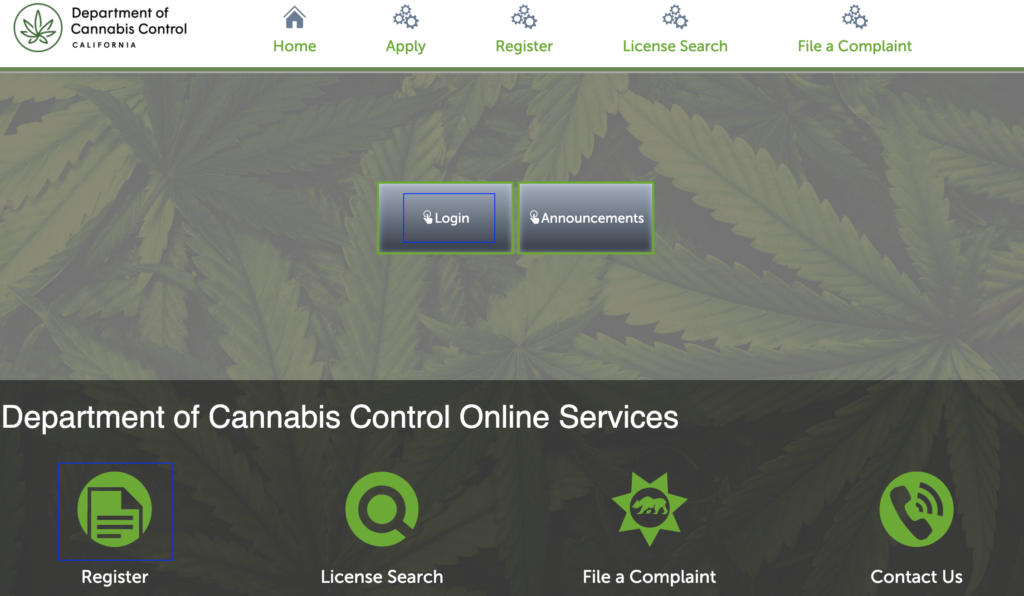
Step 3.2: Fill in the details required in this box.
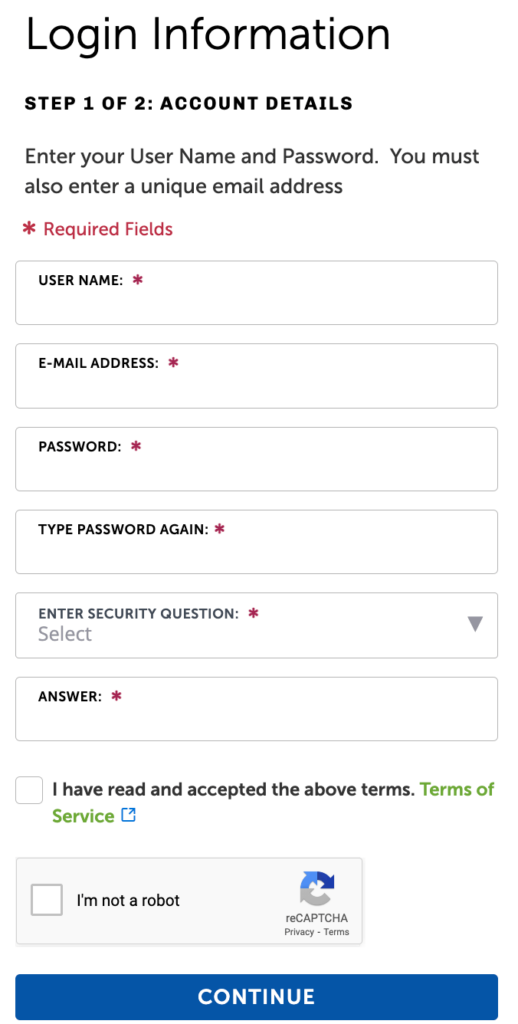
Step 3.3: Supply the contact details.
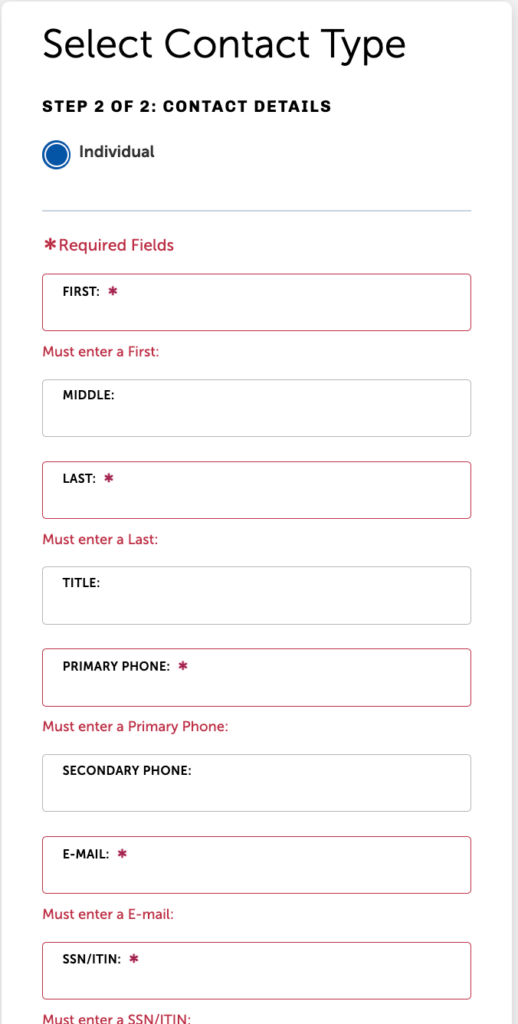
Step 3.4: Log in.
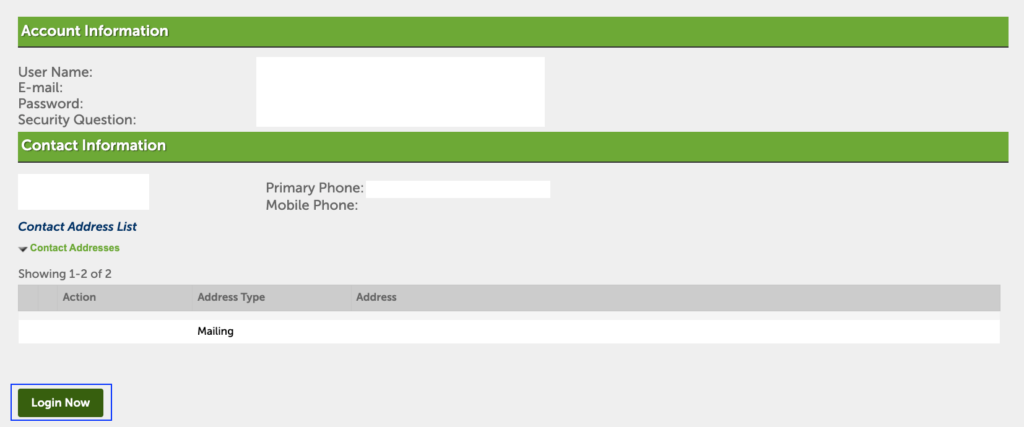
Step 3.5: Choose your distributor license type.
After creating the account, choose your distributor license type and fill in all the required fields accurately. Upload all the supporting documents the system asks for.
You don’t need to complete the application process in one go. You may stall and continue. The system saves your progress each time you make changes. Electronically sign and submit your application.
Step 3.6: Pay an application fee of $1,000
The system will relay the payment transaction instructions after you have completed the application process. Aside from the application fee, DCC needs you to pay a license fee. The amount will depend on your expected gross revenue.
You have several options to pay your license fee. You can either send payment via the following channels:
- Electronic transfer
- Check money order
- Credit card
- Pay in person by arranging a personal appointment with the DCC office
The DCC electronically sends your cannabis distribution license once everything has been satisfactorily complied with. This one-year validity license should be displayed in a prominent area of your business’s facility.
| 🦾 Pro Tip Check your inbox (even spam folders) for emails coming from the DCC licensing team. They will let you know of missing or false information from your application and will instruct remedies to correct it. Respond promptly to fast-track your application process. |
How to Get a Dispensary License in California?
For most cannabis businesses in California, they will likely fall into two (2) retail license categories:
Getting these licenses will still fall under the steps mentioned above, which means securing the same local permits, creating a business plan, and so on. Likewise, the application will still go through DCC using their website.
Step 1: Complete the local permitting requirements.
Just like in the process of getting a distribution license, you start by ticking the permitting requirements of the city or county you’re planning to conduct business in. Some areas ban cannabis commercial activities, so it’s imperative that you carefully choose where to set up your business.
Step 2: Review the state regulations for conducting cannabis business operations in California.
The DCC promulgates a set of requirements that would serve as standard procedures for conducting business in the state of California. Review them and check if this is something of your capacity.
Step 3: Prepare the necessary information and documents about your dispensary.
The DCC has a list of application forms, guidelines, and checklists you’ll need in the course of fulfilling your cannabis dispensary license application.
For specific questions, contact the DCC by emailing their main support desk at info@cannabis.ca.gov or through specific channels found on their Contact Us page.
Step 4: Access the DCC Online License Portal.
If you don’t have an account with DCC’s new licensing portal, create an account with them. In registering online, you may follow the same procedure done in the “Step-By-Step Guide on How to Get a Cannabis Distribution License in California” section.
Step 5: Complete your application.
After logging in to your account, select the type of cannabis business you’re applying for. Supply the correct information in the required fields and upload the documents asked.
Step 6: Pay the application fee.
After finishing your online application, the DCC team will send payment instructions.
Step 7: Owners need to respond to the DCC email licensing team.
All of the owners of the business listed in your online application will receive an email asking to submit an owner submittal form. Once every individual’s submittals have been received and the application fee has been paid for, DCC will start to review your application.
Step 8: Pay your license fee and post.
Yes, just like in distribution, dispensaries also need to pay a separate fee for a “license.” License is issued upon payment.
Finally, download and post your license in a prominent area of your business so customers can openly see it.
Mobile Dispensary License California: How to Obtain One?
The primary difference between the Type 9 and Type 10 cannabis retailer licenses is the presence of a storefront or a physical location.
Type 9 retailers will primarily be a “mobile dispensary” or rely on deliveries, whereas type 10 can have both a delivery and a storefront.
Some important things to know about mobile dispensary licenses in California are the extra regulations for delivery employees. These are:
- Drivers must carry an employee badge and a copy of the business plan.
- Drivers can carry up to $3,000 worth of products.
Delivery among different states is subject to that state’s laws. Under Federal law, cannabis remains illegal so even though California law protects licensed business owners they must be aware of other Federal regulations.
| 📑 You Might Want to Read Navigating Licensing And Permitting For Cannabinoid Businesses |
How to Get a Grower’s License in California?
Step 1: Check the Checklist
The first step in how to get a weed growing license in California starts with a self-inspection checklist. It would be wise to follow this checklist to get an official overview of what you’ll need on how to get a cultivation license in California.
A quick look at the self-inspection checklist is as follows:
- Inventory management & track and trace requirements
- Premises & cultivation plan documents
- Designated canopy areas
- Pesticides
- Water source
- Power source & generators
- Light pollution
- Weighing devices & weighmaster requirements
- Records
Step 2: Location Matters – Permits & Properties
After looking at the checklist, the location and size of the cannabis business come into play. Like any cannabis business based in California, a weed grower’s license is tied to a specific location.
Before applying for a state license, acquiring local permits is a must. This involves zoning checks, environmental assessments, and proof of permission to operate in the area.
Likewise, the DCC will require proof that your business legally occupies the property. Therefore, legal documents such as proof of purchase or a lease contract matter.
Step 3: Your Business Operating Procedures
As shown earlier in the checklist, your business’s inventory management, track and trace methods, cultivation plans, and so on will be submitted and reviewed by the DCC. So, your business’s operating procedures will need to be drafted and finalized.
Take note as well your location’s size and canopy areas as these will matter when determining how many plants can you grow with a grower’s license. More details on the types of cannabis growing licenses can be found below.
Step 4: Background Checks and Submitting the Application
One more preparatory step before actually applying for a weed grower’s license is to submit yourself to a complete background check. This check will involve fingerprint scanning and a check on criminal records.
California state laws do allow individuals with criminal records to apply for a cannabis license. However, the DCC will thoroughly review the details of the crime. For example, serious offenses such as those related to illegal drugs, violent felonies, fraud, and trafficking of controlled substances may impact the decision.
Once the background checks are complete and the business documents are ready, you may create a cultivator licensing account.
What are the Different California Cultivation License Types?
Here are the different types of cultivation licenses:
- Specialty Cottage licenses are for small operations and has three types: Outdoor, Indoor, and Mixed Light Tier 1 and 2
- Specialty licenses are for relatively larger yet still small operations with a total plant canopy below 5,000 square feet. The license also has three types: Outdoor, Indoor, and Mixed Light Tier 1 and 2
- Small licenses, despite its name, are operations with up to double the Specialty license with up to 10,000 square feet of canopy. It also has three types: Outdoor, Indoor, and Mixed Light Tier 1 and 2.
- Medium licenses are for cultivators with up to 1 acre of plant canopy allowed. The license has three types as well: Outdoor, Indoor, and Mixed Light Tier 1 and 2.
- Large licenses as the name implies, are for the largest of cultivation operations which allows for over 1 acre of total canopy and as much as 22,000 square feet in Indoor and Mixed Light types. As with the other licenses, the large license has Outdoor, Indoor, and Mixed Light Tier 1 and 2.
- A nursery license is for cultivators specializing in only growing clones, immature plants, seeds, or other types of cannabis used for propagation.
- Processor license is for cultivators that only trim, sift, cure, dry, grade, package, or label cannabis.
How Much is a Grow License in California?
The cost of a cultivation license in California depends on the size and type of operations the farmer will have. However, the DCC has made it easy to pay the license fee with options varying from online payments through bank accounts/checks, money orders, or credit cards. The DCC also allows in-person payment with cash through setting up an appointment to visit their office.
As for specific costs for grow licenses in California, the DCC lists them as follows:
| Cultivation license type | Application fee | License fee |
| Specialty cottage outdoor | $135 | $1,205 |
| Specialty cottage indoor | $205 | $1,830 |
| Specialty cottage mixed-light tier 1 | $340 | $3,035 |
| Specialty cottage mixed-light tier 2 | $580 | $5,200 |
| Specialty outdoor | $270 | $2,410 |
| Specialty indoor | $2,170 | $19,540 |
| Specialty mixed-light tier 1 | $655 | $5,900 |
| Specialty mixed-light tier 2 | $1,125 | $10,120 |
| Small outdoor | $535 | $4,820 |
| Small indoor | $3,935 | $35,410 |
| Small mixed-light tier 1 | $1,310 | $11,800 |
| Small mixed-light tier 2 | $2,250 | $20,235 |
| Medium outdoor | $1,555 | $13,990 |
| Medium indoor | $8,655 | $77,905 |
| Medium mixed-light tier 1 | $2,885 | $25,970 |
| Medium mixed-light tier 2 | $4,945 | $44,517 |
| Nursery | $520 | $4,685 |
| Processor | $1,040 | $9,370 |
Here’s the list of cultivation license fees for large outdoor and indoor cannabis cultivation businesses.
| Large cultivation license type | Application fee | Base license fee | Fee per additional 2,000 square feet |
| Large outdoor | $1,555 | $13,990 | $640 |
| Large indoor | $8,655 | $77,905 | $7,080 |
| Large mixed-light tier 1 | $2,885 | $25,970 | $2,360 |
| Large mixed-light tier 2 | $4,945 | $44,517 | $4,040 |
How Many Plants Can You Grow With a Growers License?
The different grower’s license types mentioned earlier also determine how many plants a cultivator can grow. These are as follows:
Specialty Cottage
- Outdoor – allows up to 25 mature plants or up to 2,500 square feet of canopy
- Indoor – permits up to 500 square feet of canopy
- Mixed light tier 1 and 2 – allows up to 2,500 square feet of canopy
Specialty
- Outdoor – allows 50 mature plants or up to 5,000 square feet of canopy
- Indoor – permits from 501 to 5,000 square feet of canopy
- Mixed light tier 1 and 2 – allows 2,501 to 5,000 square feet of canopy
Small
- Outdoor – permits 5,001 to 10,000 square feet of canopy
- Indoor – allows 5,0001 to 10,000 square feet of canopy
- Mixed light tier 1 and 2 – allows 5,001 to 10,000 square feet of canopy
Medium
- Outdoor – allows 10,001 to 1 acre of canopy
- Indoor – permits 10,001 to 22,000 square feet of canopy
- Mixed light tiers 1 and 2 – permit 10,001 to 22,000 square feet of canopy
Large
- Outdoor – which permits more than 1 acre of total canopy
- Indoor – which allows more than 22,000 square feet of total canopy
- Mixed light – which permits any more than 22,000 square feet of total canopy
Do You Need a License to Sell CBD in California?
Yes. California requires a license to sell CBD. The regulating body for the sale and cultivation of cannabis is the Department for Cannabis Control (DCC).
CBD or cannabidiol products that have a tetrahydrocannabinol (THC) level greater than 0.3% need to go through the traditional regulatory methods as mandated by the DCC.
On the other hand, applying for a CBD license in California for products manufactured from industrial hemp is regulated by the California Department of Public Health (CDPH).
The Bottomline
Getting a distribution license in California involves a lengthy process that serves to regulate cannabis in the state. However, information is clear-cut and easy to digest, with the DCC even handing out checklists and flexible payment methods. What’s important is to follow all the regulations and guidelines properly to have the maximum chance of having the grower’s license approved.
Looking for established cannabis partners who know what they’re doing? With a wide array of products to choose from, The Hemp Doctor Wholesale stands out with its own cannabinoid and cannabis products. Partner with us and get exclusive access to our broad range of products and pricing rewards!
| Disclaimer The information provided here is accurate as of the time it was published but is subject to change at any time according to internal changes within California’s Department of Cannabis Control. Please verify the details on the DCC website for reference. |
FAQs
Can Individuals with Criminal Records Obtain a Growers License in California?
Yes! The state of California allows individuals with criminal records to hold a grower license. However, the regulating body, the DCC, will carefully check the details and nature of the crime via their background check.
Where Do I Apply to Get a Distribution License in California?
The Department of Cannabis Control California (DCC) is responsible for regulating and issuing licenses for cannabis businesses in California. If any aspiring individual or group would like to start a dispensary in California, the DCC’s website contains all the necessary information, including the portal for their application process.
Can I Grow Cannabis at Home Without a License?
Yes! Albeit with some conditions that must be strictly followed. According to the DCC, if you are at least 21 years old and living in California, then you can grow cannabis in the comfort of your own home. Granted, you follow some simple rules.

